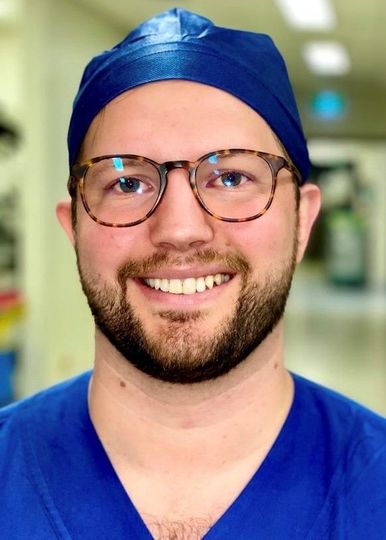
Meet Doctor
Benjamin Beer
Orthopaedic Spine Surgeon
Dr Beer is an Australian trained Orthopaedic and Spinal Surgeon with over a decade of Orthopaedic experience and multiple, sub-specialist spinal fellowships.
He is compassionate, empathetic and treats every patient with care and respect.
Dr Beer loves nothing more than helping his patients take back control of their lives through knowledge and individualised care of their spinal condition/s.
How We Can Help
Dr Beer aims to:
- Treat you with empathy and compassion
- Assess you and determine a precision diagnosis
- Educate you and your treating team as to your specific diagnosis (i.e. not just lower back pain)
- Prescribe an individualised treatment plan
- Usually non-operative to begin with
- Provide safe and evidenced based, minimally destructive surgical solution when warranted.*
WARY OF SPINE SURGERY?
Patients are often understandably wary of spinal surgery. Often patient’sGPs or other patients have warned them of potential horrors including the typical ideas of open spinal fusion surgery, typically performed from the posterior (the back). The reality for the majority of my patients is very different.
Firstly, spinal surgery for back/leg/arm pain or spinal compression is typically only considered once high quality, evidence-based specialist conservative treatments have failed to provide adequate relief.
The pain must also be severe, chronic, and significantly impairs your quality of life.
Here are some reasons why someone might consider spinal surgery for back pain:
- Neurological Symptoms
- Weakness
- Tingling
- Sensory disturbance
- Bowel/bladder issues
- Structural Issues
- i.e. instability
- Progressive Condition
- Specific Indications
- Tumour
- Trauma
- Severe/progressive pain
- Reduced Quality of Life
- Failed Conservative Treatment
Anterior Approach to Spine Surgery Benefits
My surgical preference is to access from the anterior (the front).
The anterior approach to spinal surgery is a technique that involves accessing the spine through the front of the body, as opposed to the more traditional posterior approach.
This approach offers several key benefits such as less pain and damage to the muscular stabilisers than traditional posterior spinal surgery. In my experience this leads to higher satisfaction and success.
Direct Access to Affected Area
One of the primary benefits of the anterior approach is that it provides direct access to the affected area of the spine. This can be advantageous for treating conditions that involve the vertebral discs, such as herniated discs or degenerative disc disease. Surgeons can directly visualize and access the problem area without having to manoeuvre around the nerves or dura.
Muscle Sparing
The anterior approach typically involves minimal muscle disruption to the muscles and soft tissues surrounding the spine compared to the posterior approach and is the only approach that allows for Artificial Disc Replacement. This can result in less postoperative pain, a shorter recovery time, and a decreased risk of muscle-related complications. Patients often experience improved mobility and function sooner after surgery as their dynamic spinal stabilisers remain intact.
Reduced Blood Loss
Another advantage of the anterior approach is the potential for reduced blood loss during surgery. By accessing the spine from the front through anatomical planes, surgeons can generally avoid large incisions and extensivestripping of the large muscles from the posterior spine therefore reducing the risk of bleeding. This can lead to a safer surgical procedure and may minimize the need for blood transfusions.
Improved Fusion Rates
For spinal fusion procedures, where two or more vertebrae are fused together to stabilise the spine, the anterior approach can offer improved fusion rates. The technique allows for greater access to prepare and remove the disc, improved placement of large footprint inter body cages and bone grafts, and other fusion materials, which can enhance the success of the fusion process and provide long-term stability.














